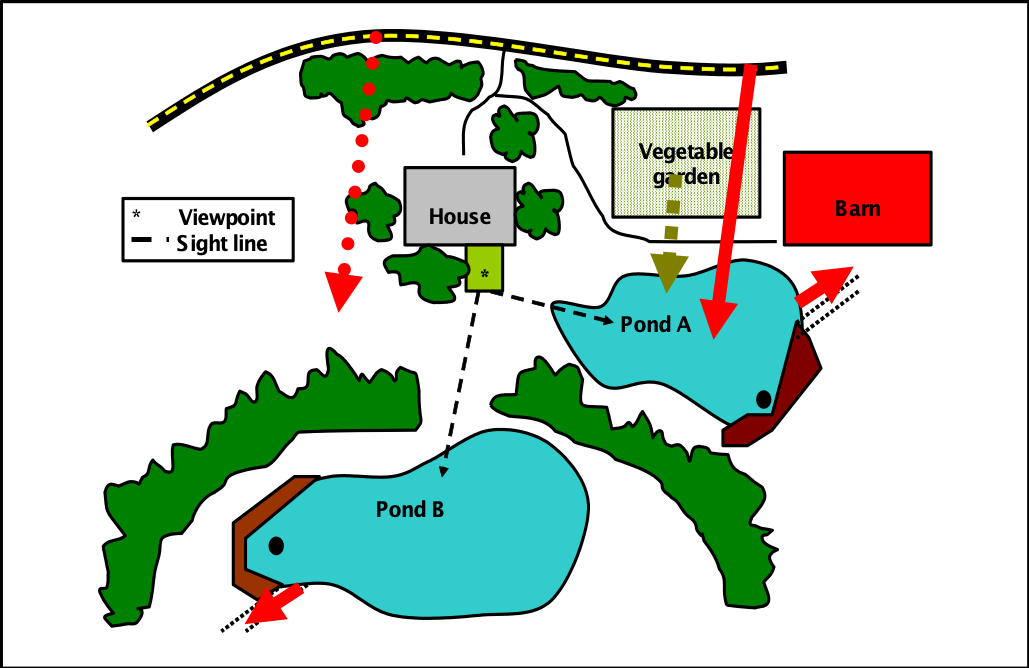Choosing a Location
Selecting the pond location is extremely important. Before you select your pond site, consider the shape of the land (topography), water supply, and soil type. If possible, consider more than one location, and study each one to select the most practical, attractive, and economical site. Consider potential problems, such as runoff from agriculture, past land uses, or likelihood of attracting trespassers.

Topography
Topography directly affects building costs and management. Place the pond where enough water can be held with the least amount of earth fill.
A good site is usually one where you can build a dam across a narrow section of a valley and where the slope of the valley floor lets you flood a large area. Such sites are ideal and minimize areas of shallow water (water fewer than 3 feet deep). Avoid large areas of shallow water because they become too shallow to use in late summer and fall dry periods, and they encourage the growth of weeds.
Likewise, steep sloping valleys may make the pond too deep, which may lead to poor fish production and possible fish kills. Also, avoid locations with constantly flowing creeks or streams, as these flush the pond and make it difficult to manage pond water chemistry.
Water Supply
Water availability should be adequate, but not excessive, and may be provided by springs, wells, or most commonly, surface runoff. Check well water for potentially high levels of dissolved substances, such as iron, which may cause problems in the pond. In addition, well and spring water may be low in oxygen when it is pumped or flows out of the ground.
Do not use standing surface water (such as pumping from creeks and sloughs) to fill ponds if you can avoid it, because surface waters are a source of unwanted fish, parasites, and fish diseases.
For ponds where surface runoff is the main source of water, the contributing drainage area should be large enough to maintain a suitable water level during dry periods. The drainage area should not be so large, though, that expensive overflow structures are needed and water exchange occurs too frequently.
As a rule in Mississippi, a pond should have 5 to 10 acres of drainage area for each acre of impounded water. The amount of runoff from a watershed depends on local climate, topography, soil type, and plant cover. The map below is an example of how to determine the watershed, or catchment basin, of a planned pond (gray area).

Determine pond size by your needs and preferences. Bigger is not always better. Small ponds (1 to 3 acres) provide enjoyable fishing if you follow good planning and proper management guidelines. Larger ponds and lakes provide many other uses, such as water supply, limited irrigation, swimming, boating, and hunting, and they are less susceptible to water level changes.
Soil
Suitable soil is one of the main factors in selecting a pond site. The soil should contain a layer of clay or silty clay material that water will not seep through. Sandy clays are also usually satisfactory. At least 20 percent clay is necessary to hold water. To determine soil suitability, take soil borings at frequent intervals and have them analyzed.

It is much easier to check the soil for lime requirements and to lime the pond bottom if needed just after construction before the pond begins to fill with water. See Water Quality for more information.


